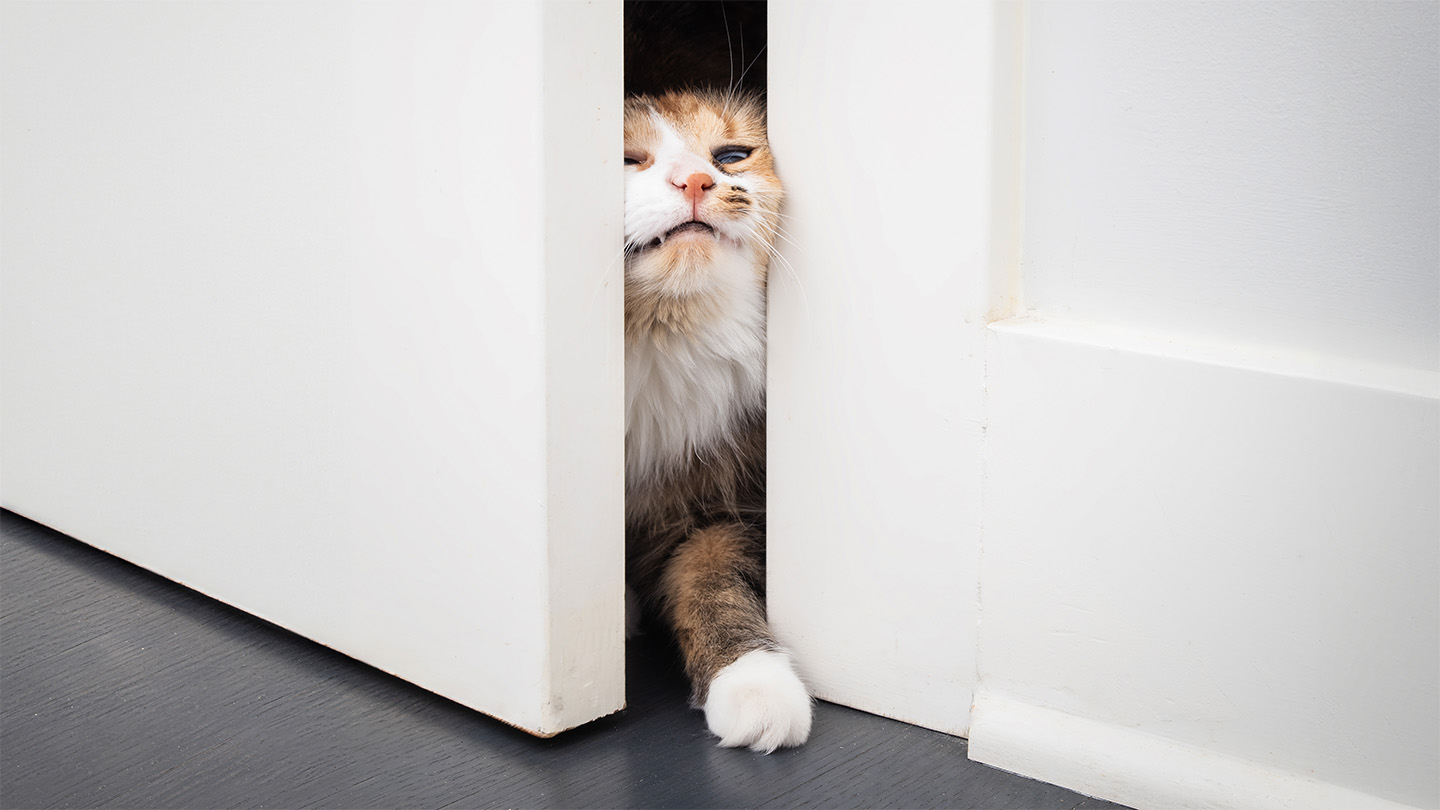Cats may seem solid, but they’re actually somewhat fluid — at least according to a 2017 theoretical physics paper inspired by videos of cats squeezing under doors, into tight vases and down narrow crevices. Now, a researcher has taken this idea a step further and physically tested dozens of cats to see when they behave more like liquids or solids.
Cats move fluidly through high and narrow nooks but hesitate when approaching uncomfortably short holes, reports biologist Péter Pongrácz on September 17 in iScience. The finding suggests that cats are aware of their own body size and can form mental images of themselves.
Pongrácz, from Eötvös Loránd University in Budapest, tested dogs in a laboratory and showed that dogs are able to represent themselves. In this study, published in 2019 in Animal knowledgedogs slowed down and hesitated before walking through uncomfortably small openings, revealing that they rely on awareness of their body size to make decisions. When the experiment was done, Pongrácz thought, “What about cats?” he says.
But cats are more difficult to test in the laboratory than dogs. Felines tend to be withdrawn and would become stressed in that environment, says Pongrácz. So he brought the lab to the cats.
With the help of colleagues, Pongrácz built a portable laboratory, which they set up in the homes of 29 cat owners throughout Budapest. In each home, the team attached two large cardboard panels to a door frame: one with five holes of the same height but decreasing width, and another with five holes of the same width but decreasing height. An owner stood on one side of the panel, while the cat and the experimenter stood on the other. For each trial, the cat had to squeeze from the experimenter’s side to the owner’s side through the holes while being filmed.
Getting cats to follow directions is a difficult task. Unlike dogs, cats are difficult to call back to a place. When a cat seeped through the hole, the owner had to catch their pet and hand it to the panel of a researcher to start a new experiment. But some cats hated being handled and avoided their owners’ hands at all costs, says Pongrácz.
30 out of 38 cats completed the experiment. When faced with holes of varying heights, 22 cats hesitated to crawl through the shortest ones, an analysis of the footage showed. When the holes varied in width, only eight cats paused before approaching the narrowest nook. Most cats squeezed through slim openings without hesitation. The team calls this strategy trial-and-error: Whether the cats fit or not, they tried to float through.
In nature, this reluctance to bend down and crawl through short gaps can be a self-preservation strategy, says Pongrácz. If a cat squeezes through a hole without being able to see what’s on the other side, they can make themselves vulnerable to potential threats. The fact that they still pause in the safety of their home suggests that the cats also rely on their body size representation, or how they imagine their body sizes, to plan their approach.
Pongrácz’s experiment is simple and elegant, says Sridhar Ravi, an aerospace engineer at the University of New South Wales in Australia. Ravi conducted a similar experiment with bumblebees and in 2020 published the first study showing that a flying insect was aware of its body size and shape. But he suspects cats may behave differently depending on why a cat wants to squeeze through a hole. For example, a cat may hesitate to wander through a hole while chasing a mouse to avoid injury during rapid movements. “This is something the study could have commented on or even experimented with,” says Ravi.
Despite the challenges of testing cats, Pongrácz still had a lot of fun. He met many funny cats, but says that “the funniest thing is how people behave.” Some owners thought their cats were geniuses, only for the felines to struggle with the experiment. Other owners were convinced that their cats lacked intelligence. Minutes later, the cats would easily complete the task, shocking their owners.
